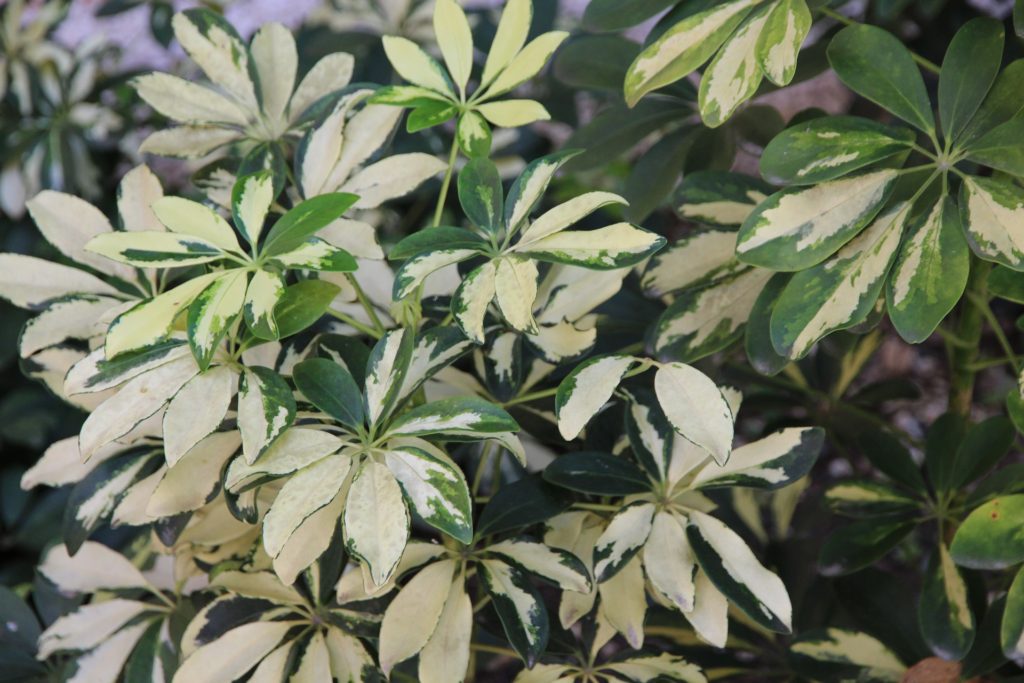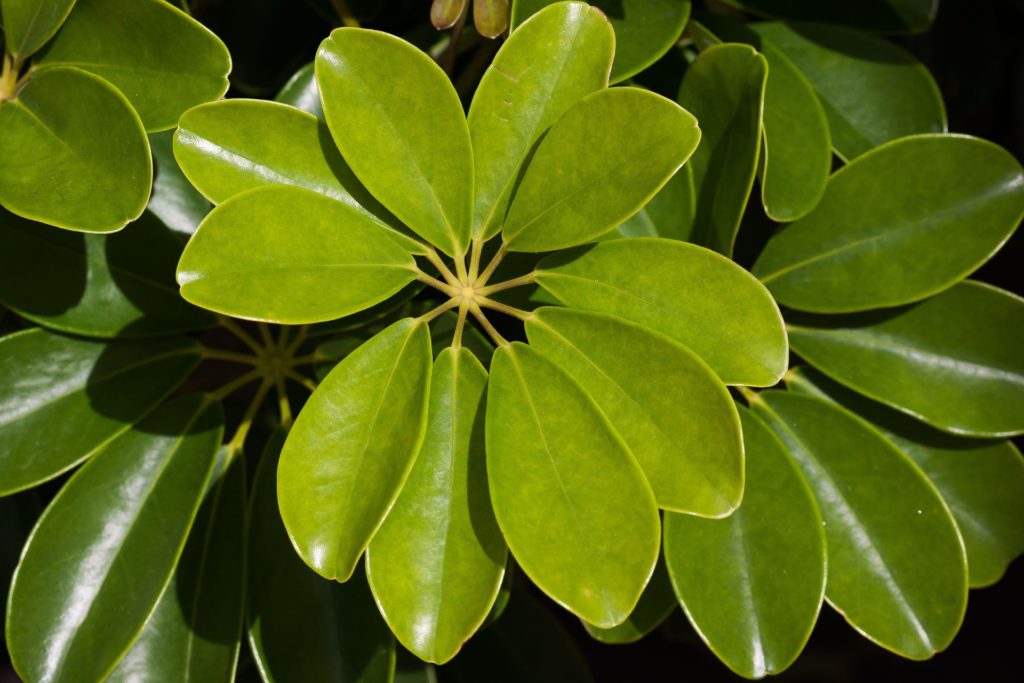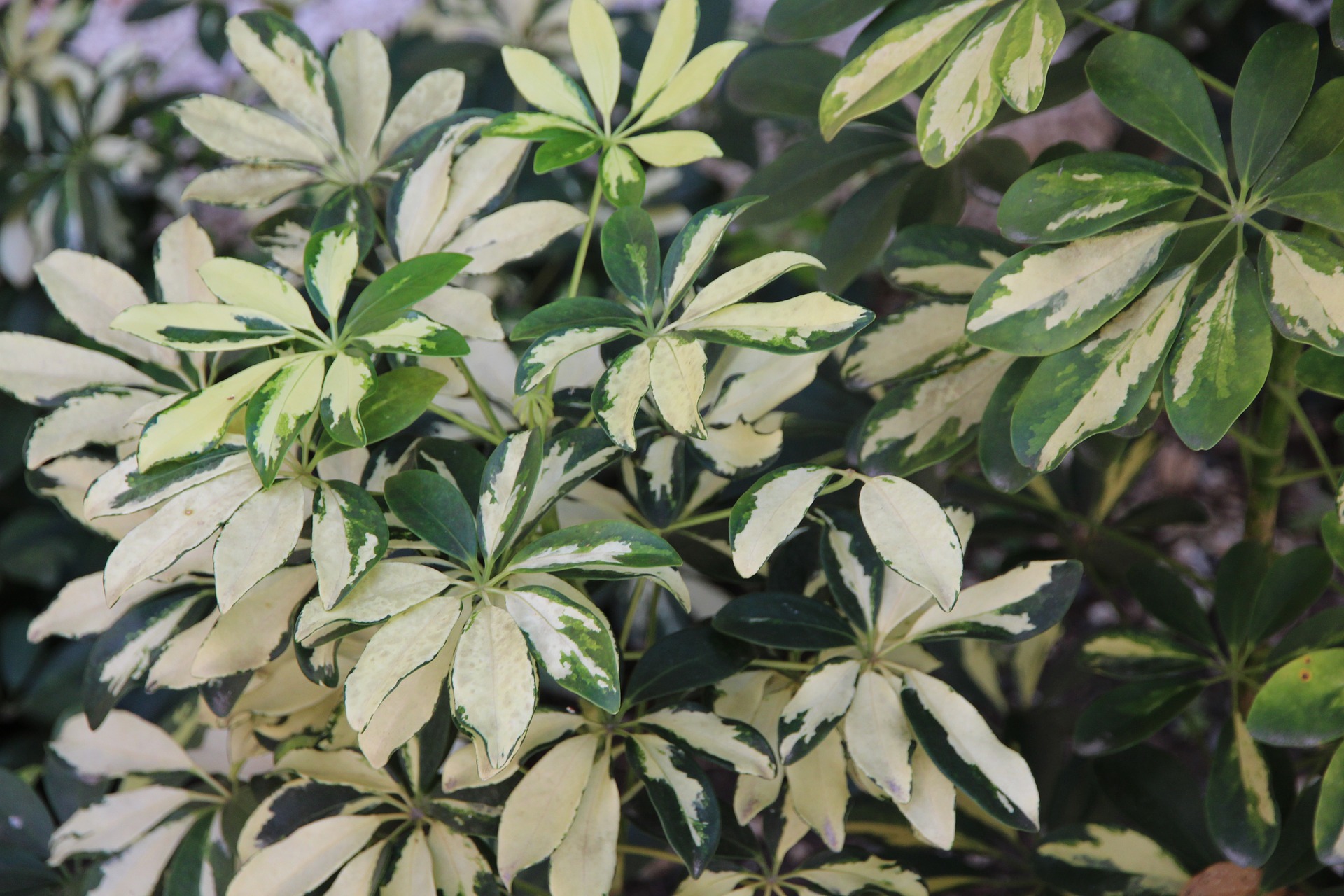The Reasons Why Your Umbrella Tree is Dying
Taking care of a schefflera plant is relatively easy, however, even the most experienced home gardeners sometimes need help. As someone who has killed several of my favorite houseplants, I’ve had to learn these lessons the hard way and I want to help you avoid the mistakes I’ve made. Here is a list of the main reasons that your schefflera is starting to show signs of stress and steps you can take to bring it back to life.

1. Overwatering
Water your umbrella plant no more than once per week. Too much water in the caught in the soil of your schefflera will eventually lead to root-rot. The leaves will turn yellow, the stems will blacken and eventually all the leaves will fall off. Remove any water the plant is sitting in and instead use a pebble tray beneath the pot to catch any excess water. A pebble tray has the added bonus of improving the surrounding humidity level around your plant which will reduce the need for misting on a regular basis.
How to Fix an Overwatered Schefflera:
Overwatering is the main reason umbrella trees die. These methods I’ve learned below can help save your inundated schefflera plant and you’ll see that it will begin to recover after 1-2 weeks if you follow these steps:
- Skip watering for 1 week. Give the plant a chance to dry out completely before attempting your next watering. Stick your finger 2 inches into the soil and make sure it is not too moist.
- Remove the tray. The tray catches excess water and that has drained from your plant, removing this will help prevent the roots from turning black and rotting. Removing excess water will also help prevent insect and fungal infestations.
- Warm the soil. Increase the temperature in your home a few degrees to help the water in the soil to evaporate quicker. Don’t increase it too much though, as this could harm your other plants and also annoy your housemates.
- Increase ventilation. Open the windows, turn on the fan and remove the tray underneath to greatly help dry out the waterlogged soil.
- Swap the soil. Give the plant a fresh pot of dry loose soil. The extra nutrients in the fresh soil can help revitalize your struggling plant. This method is a bit drastic however, as this can cause additional stress on an plant that is already fighting to survive.
- Repot. Swap the pot to something new, like earthenware. The porous nature of earthenware will help to extract the additional moisture from the soil. A fresh pot is a good way to increase its odds of coming back to life.
2. Underwatering
If the soil is hard and crusty then your plant needs water as soon as possible. The leaves will become pale and withered and begin to droop. Put the plant in your sink and let the water completely soak the soil for 5-10 minutes to boost the overall moisture level. Let the water drain completely until it is no longer dripping.
How to Fix an Underwatered Schefflera:
An underwatered umbrella plant will bounce back fairly quickly if you are able to tend to them right away. However, if you’ve gone on vacation for a month and all that remains is a stem and a pile of brown leaves, it may be too late. However, if your plant still has most of its leaves attached it is still salvageable, try out some of these methods below to help revive it quickly:
- Drench the soil. Place your plant in the sink and let the water run for at least 5 minutes to give it a good soak. Let the water drain out completely (no dripping) before returning it to it’s normal location.
- Increase humidity. Mist the leaves of your plant with fresh spring water; Or, use a pebble tray beneath the pot with half inch of water in it to increase the overall humidity surrounding the plant.
- Replace the soil. New soil contains nutrients that your plant may be lacking. Use soil that is meant for tropical plants for best results. Make sure the soil is not packed down too much as this will cause drainage problems in the future which can lead to root-rot.
- Add fertilizer. Restoring nutrients to the soil will help bring the plant back to life. Be sure to use the correct fertilizer. Using the wrong fertilizer can be harmful to some plants and cause damage to the roots.
3. Pests
Insects and other bugs will happily suck the sap and drain nutrients directly out of your beloved plants if you let them hang around for too long. Remove any unwanted insects like mealy bugs, spider-mites, whitefly, and aphids using a mixture of 50/50 water and rubbing alcohol spray directly onto the leaves of the infected area. Scrape off any dead bugs you find using a paper towel or cotton swab and put them in the trash to prevent them from spreading to your other plants.
How to Remove Pests from Schefflera Plants:
- Quarantine. Move any infected plants away from the rest of your collection to prevent the infestation from spreading.
- Kill the bugs. Spray the infestation with water and a few drops of dish soap will kill most bugs. If the bugs survive this initial attack, kick it up a notch by mixing 50/50 water and rubbing alcohol (isopropanol)
- Remove dead bugs. Wipe off any insect carcasses gently with a wet paper towel. Make sure you don’t put them in your trash instead of your compost as they can infect the soil and cause future outbreaks.
- Prune. Remove leaves or branches that are showing damage from the insects. This will be brown or black spots, ruffled leaves, holes, or slimy sores. Most leaves and stems will be ok if you leave them attached and are merely unpleasant looking.
- Replace. Sometimes insect infestations are too much for one plant to handle and at the risk of infecting all your other plants it may be safest to take some cuttings from uninfected limbs or even throw it away completely.
4. Insufficient Sunlight
The schefflera prefers indirect sunlight for 4-6 hours per day (10,000–20,000 lux). Keep your umbrella plant in a bright area of your home so that is can gather enough energy to grow and thrive. Too much direct sunlight can cause the tips of the leaves to become brown and sunburnt.

Here’s How Much Sunlight Schefflera Need to Thrive:
Umbrella plants grow in tropical climates, and as such it will require a bright spot in your home if you want it grow new leaves. A healthy does of daily sunlight is the key to getting healthy new leaves to grow; You may recall from science class, plants turn sunlight into energy in a unique process called photosynthesis.
- 6-8 hours per day. Scheffera need a bright spot to thrive. It will survive if you put it in the darker corner of your house, but it wont grow much and certainly won’t thrive.
- Indirect Sunlight. A bright area in your home works best. Allowing beams of direct sunlight touch its leaves will eventually cause sun damage and you’ll begin to notice brown spots or burnt tips on the foliage.
- 10,000–20,000 lux. If you really want to get nerdy with your plants, you can buy a light meter to measure the amount of lumens your plant is receiving. Here is a helpful formula for measurement: lux = lumens/m2
5. Temperature
The ideal temperature for an umbrella tree is between 50-100F (10-37C). Too much heat and your plant will start to wilt. Too much cold will cause the plant to not grow any new leaves and will begin to droop and eventually die. These plants love to live in warm locations around the globe. Most plant species (of any kind) will not grow new leaves if the temperature drops below 41F or 5C, and will tend to enter a state of hibernation where they are just barely holding on. Low temperatures are especially harmful to tropical plants like schefflera.
The Correct Temperature for Your Schefflera:
- 50-100F (10-37C). Keeping the temperature within this range will ensure your plant is able to grow without causing heat or cold damage. However, if you want your umbrella tree to thrive and impress your plant loving friends then the ideal temperature range is going to be: 60-90F (15-33C).
- Adjust placement. Moving your plant closer to a window may help increase its temperature by giving it more sun. However, some windowsills can be drafty which may actually lower the temperature. That’s why it is important to monitor the temperature in its surrounding area.
- Buy a thermometer. These are not expensive and can help you to keep and eye on the heat levels in your home so you can adjust your thermostat accordingly.
- Open the windows. This can help to either raise or lower the temperature in your home by allowing more airflow. Increased ventilation also helps circulate the air in your home giving your plants access to vital carbon dioxide which they need to breathe.

